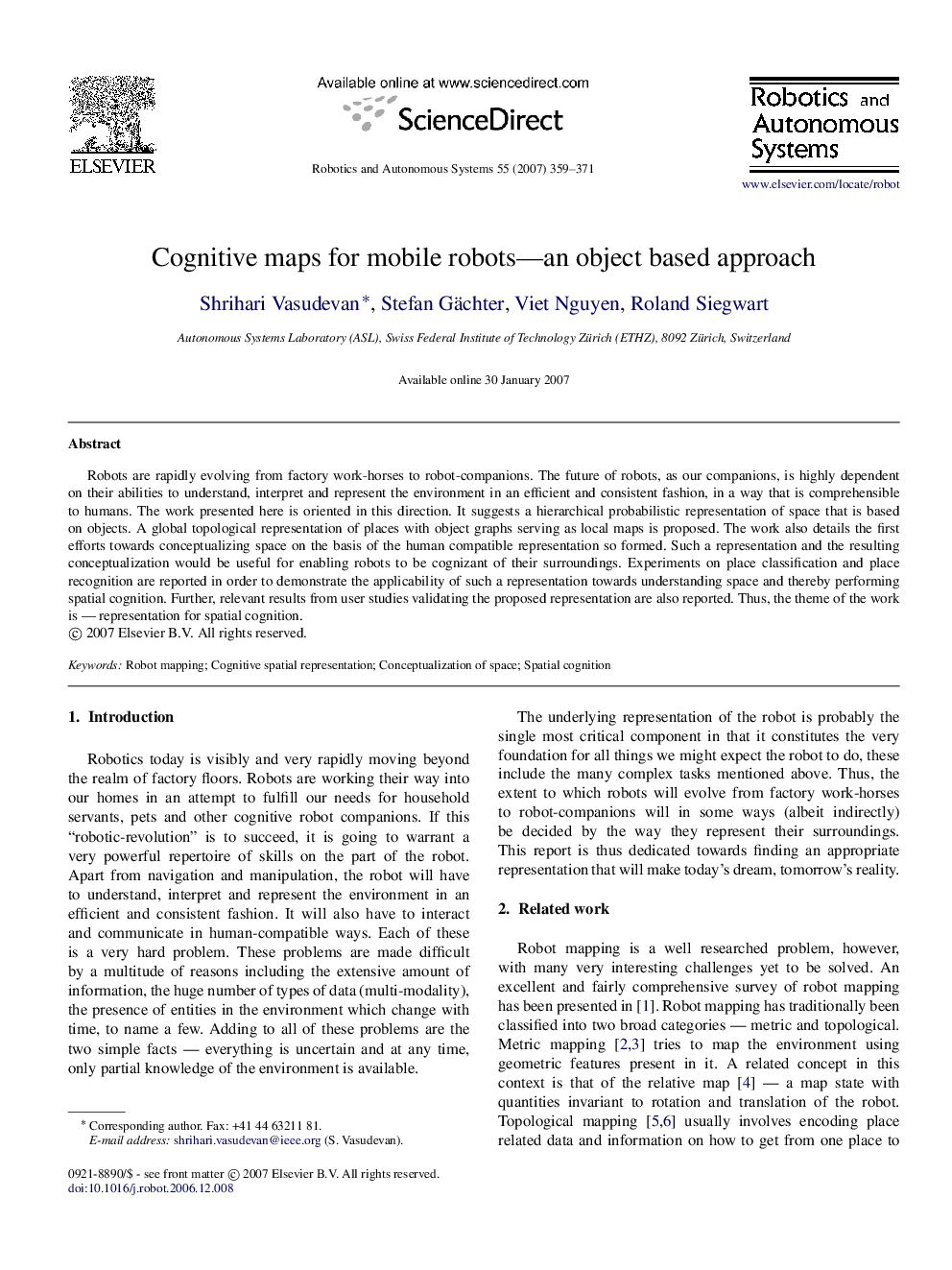| Article ID | Journal | Published Year | Pages | File Type |
|---|---|---|---|---|
| 413564 | Robotics and Autonomous Systems | 2007 | 13 Pages |
Robots are rapidly evolving from factory work-horses to robot-companions. The future of robots, as our companions, is highly dependent on their abilities to understand, interpret and represent the environment in an efficient and consistent fashion, in a way that is comprehensible to humans. The work presented here is oriented in this direction. It suggests a hierarchical probabilistic representation of space that is based on objects. A global topological representation of places with object graphs serving as local maps is proposed. The work also details the first efforts towards conceptualizing space on the basis of the human compatible representation so formed. Such a representation and the resulting conceptualization would be useful for enabling robots to be cognizant of their surroundings. Experiments on place classification and place recognition are reported in order to demonstrate the applicability of such a representation towards understanding space and thereby performing spatial cognition. Further, relevant results from user studies validating the proposed representation are also reported. Thus, the theme of the work is — representation for spatial cognition.
